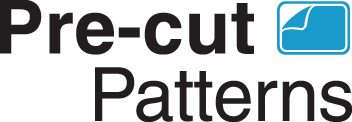Tips on how to photograph your etched glass project. Create photos to share on social media and web sites to promote your work and creativity.
I just finished this etched glass project. It turned out really well. I used custom stencils from Pre-cut Patterns, and glass etching cream. Now I want to photograph the project, so I can post it on social media and keep it as a record.
Here is the basic set up. You have your subject, you have a background, you have lighting and your camera. The idea is to have a smooth background, preferably in a dark color. You want your lighting to be above the subject and behind. So that it highlights the etched surface. With the camera, you want to be at about the level of the glass and close to the subject, so that you can capture all the detail.
So here I am, photographing the glass in my kitchen. I have a window behind the glass, with light streaming in from behind and above, which looks great. But you can see from the pictures I’m taking that the background is cluttered. It distracts from the image and it is hard to see the etching. So to improve my shot I’m going to use some things I find around the house. I’ve got a towel that’s a dark color that I will use for the background, and I still have the light coming through the window. I’m arranging the glass in a careful composition and this should make a big difference in my image. I’ll be much more confident sharing this image online.
We don’t always have natural light streaming through a window. In this room we have fluorescent lights, we have no exterior windows. Fluorescent lighting is terrible for the glass, because it is an overall general lighting that doesn’t create a contrast between the background and the glass, we have a lot of reflections going on within the glass. So what I like to do is use one single lamp. This is a shop lamp we have, it is all painted and dusty. We’ll position that above and a little behind the glass. Of course we have our dark fabric backdrop. When I look through the camera lens I will see that the background here is still brightly lit. So I’m going to use a couple pieces of paper and masking tape to shade the background, and at the same time it helps to redirect the light down to the glass.
I’ve turned off the overhead lights and the only light source in the room is this lamp. And I’m going to take a photo with my iPhone, just as I did in the kitchen earlier. With this setup we are able to create something that is similar to the daylight setting I had in my kitchen, while we are using completely artificial light.
OK, we’ve used natural and artificial light to document our work. And we’ve captured some great images. But sometimes we want a little more, and since we have everything set up, now is a great time to experiment. The problem with documenting our project this way is that it doesn’t set a sense of scale. The viewer doesn’t know how large the glass is we are working on. So adding a prop can give context and tell a viewer immediately what they are looking at. Props, together with lighting and composition can be used to set a mood, or tell a story.
As you can see, using props and lighting effects creates a mood and atmosphere, and context for your etched glass project.
We hope you found this video useful, and will use these tips when shooting photos of your etched glass.

